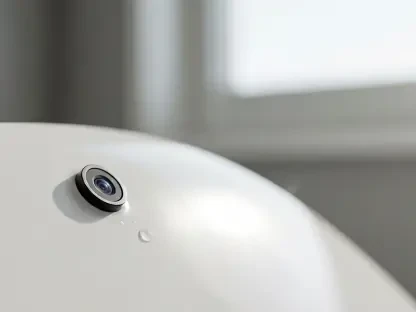Diving into the depths of innovation, we’re thrilled to speak with Oscar Vail, a technology expert with a sharp focus on cutting-edge fields like robotics and underwater systems. With a career dedicated to pushing the boundaries of what’s possible, Oscar has been closely following groundbreaking advancements, including a remarkable underwater exoskeleton developed by a team at Peking University. This portable device is designed to assist divers by enhancing knee movement, reducing energy use, and extending dive times. In our conversation, we explore the inspiration behind such technology, the unique challenges of adapting exoskeletons for underwater environments, the impact on divers’ performance, and the broader potential for marine exploration and beyond.
Can you tell us what might have inspired the creation of an underwater exoskeleton for divers?
I think the inspiration likely stems from the sheer difficulty of moving underwater. The ocean covers most of our planet, and exploring it is crucial for science, resources, and even defense. But divers face intense physical challenges due to water resistance, which drains energy fast. The idea of an exoskeleton probably came from seeing how these devices help on land—reducing strain and boosting endurance—and wondering if that could translate to underwater settings. It’s about giving divers a tool to work longer and safer in an environment that’s naturally tough on the human body.
What are some of the biggest hurdles in adapting exoskeleton technology from land to underwater use?
The underwater environment is a whole different beast compared to land. On land, exoskeletons deal with gravity and weight-bearing issues, but underwater, you’re fighting constant resistance from water, plus pressure changes and corrosion risks from saltwater. Designing a system that’s watertight, durable, and still lightweight enough to not hinder a diver is incredibly complex. Then there’s the biomechanics—how a diver moves, like with a flutter kick, is so different from walking. The technology has to sync with those unique motions while accounting for buoyancy and drag. It’s a massive engineering puzzle.
How does this underwater exoskeleton specifically support divers with their movements?
From what I’ve seen, this exoskeleton focuses on assisting knee movements during a flutter kick, which is a common swimming technique for divers. It uses motion sensors to track how the diver is moving and a force-based control system to apply just the right amount of torque to the knees at the right time. Essentially, it reduces the effort needed for each kick by giving a little push where the muscles would normally strain the most. It’s like having an extra set of muscles that don’t get tired, helping divers maintain their rhythm without burning out.
The research showed significant reductions in air use and muscle effort. Can you explain what those improvements mean for divers?
Absolutely, the numbers are striking. A 22.7% drop in air consumption means divers can stay underwater much longer on the same tank, which is a game-changer for missions or research dives where time is critical. Less air used per minute directly extends operational range. Then, with muscle activation in the quadriceps and calves down by about 20%, divers aren’t working as hard for each movement. That reduction in effort translates to less fatigue, so they’re not exhausted halfway through a dive. It’s not just about endurance—it also lowers the risk of cramps or injuries from overexertion, making dives safer overall.
How do you think divers adapt to using this kind of assistive technology underwater?
Adaptation is always a key concern with wearable tech. From the studies, it seems divers took to this exoskeleton pretty naturally, which suggests the design mimics their normal movement patterns well. But I’d guess there’s still a learning curve, especially in feeling out how much assistance the system provides versus their own effort. Getting used to that balance takes time, and comfort is huge—any bulkiness or restriction could throw off a diver’s focus. Feedback from testers likely played a big role in tweaking the fit and function to make it feel like a seamless extension of their body.
What potential do you see for this technology in various underwater activities?
The applications are incredibly broad. For marine research, this could let scientists spend more time collecting data or observing underwater ecosystems without tiring out. In underwater construction—think pipelines or offshore rigs—it could mean workers handle physically demanding tasks with less strain, improving efficiency and safety. Even for training new divers, this exoskeleton could lower the physical barrier to entry, helping beginners build confidence without exhausting themselves. And in rescue operations, extending dive time and reducing fatigue could literally save lives. It’s a tool that amplifies human capability across so many fields.
Why is the portability of this underwater exoskeleton such a significant feature?
Portability is everything in real-world scenarios. If an exoskeleton is too bulky or needs a ton of setup, it’s not practical for divers who often work in remote or dynamic environments. A portable system means it can be easily transported to dive sites, put on without complex gear, and used without tethering to external power sources. That flexibility makes it viable for everyday use, whether for a quick research dive or an emergency response. It’s about bringing high-tech assistance into the field without losing the mobility divers rely on.
What is your forecast for the future of underwater robotics and assistive devices like this exoskeleton?
I’m really optimistic about where this is headed. This exoskeleton is just the beginning—proof that wearable robotics can thrive in underwater settings. I foresee more advanced systems that assist not just knees but other joints, or even integrate with diving gear for better streamlining. We might see AI-driven controls that adapt assistance in real-time based on depth, current, or diver fatigue. Beyond individual devices, I think we’ll see collaborative robotics—think underwater drones working alongside divers wearing exoskeletons for complex tasks. The ocean is still largely unexplored, and tools like these will be key to unlocking its potential while keeping humans safe and effective down there.









